One important goal of our long-term data series and of the present cruise is to increase the understanding of the feeding ecology, reproduction and population structure of key Baltic fish species. Why is Baltic cod getting thinner? How are herring and sprat competing for zooplankton? How are the two genotypes of cod in the Baltic, each adapted to different conditions, distributed over space and time? How many eggs are spawned by a cod female, and does this differ for an individual that is in good or bad condition? Answering these and other questions will help hopefully help us to better project trends and fates of fish populations in the rapidly changing Baltic Sea.
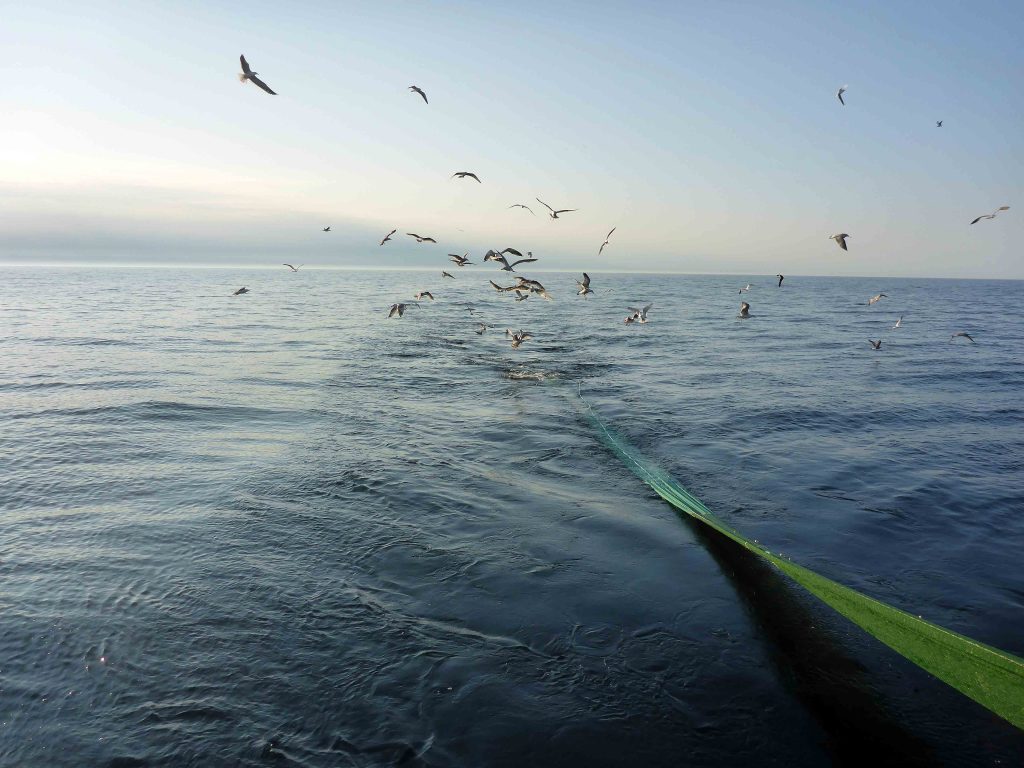
Consequently, a major focus of our cruise until now has been the catch, sampling and measurement of Baltic fish species. To catch fish we use a trawl net, similar to a regular fishing vessel but with smaller dimensions. The three species cod, herring and sprat are dominating our catches, but whiting and flatfishes like flounder, plaice and dab also occur regularly.
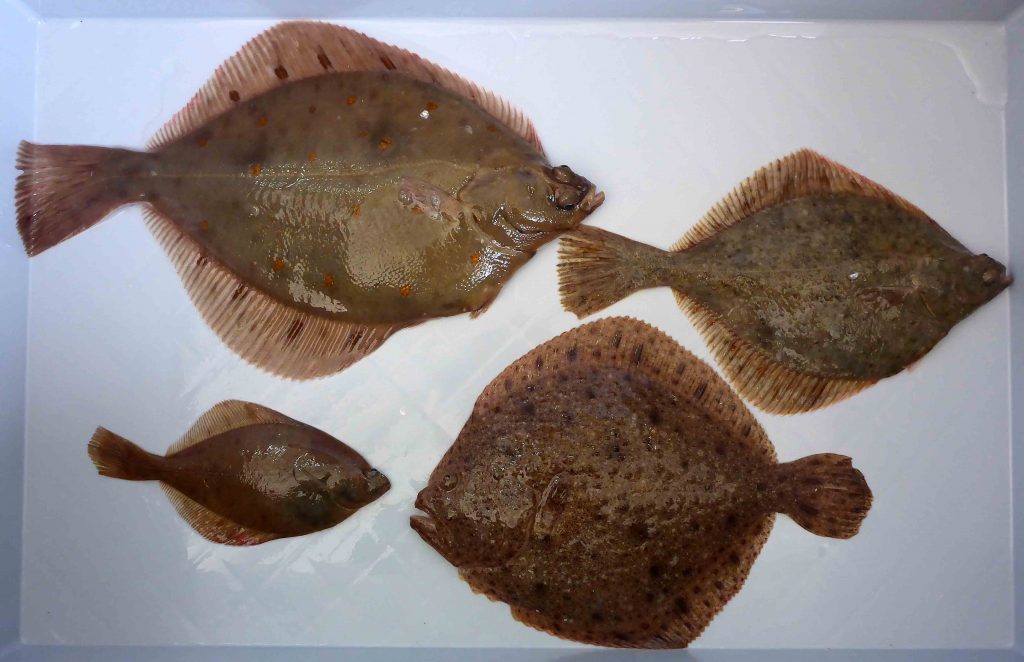
Fish are then handled, measured and sampled in a tightly orchestrated sequence of steps, usually involving 7-8 scientists who are working up the catches. Work steps include the measurement of the length and weight of all individual fish, which allows us to calculate their condition, i.e., how well they are nourished. This is a topic of particular interest in the context of the observation that cod condition has dramatically declined over the past decades (“starving Baltic cod”), likely due to the spread of oxygen minimum zones.
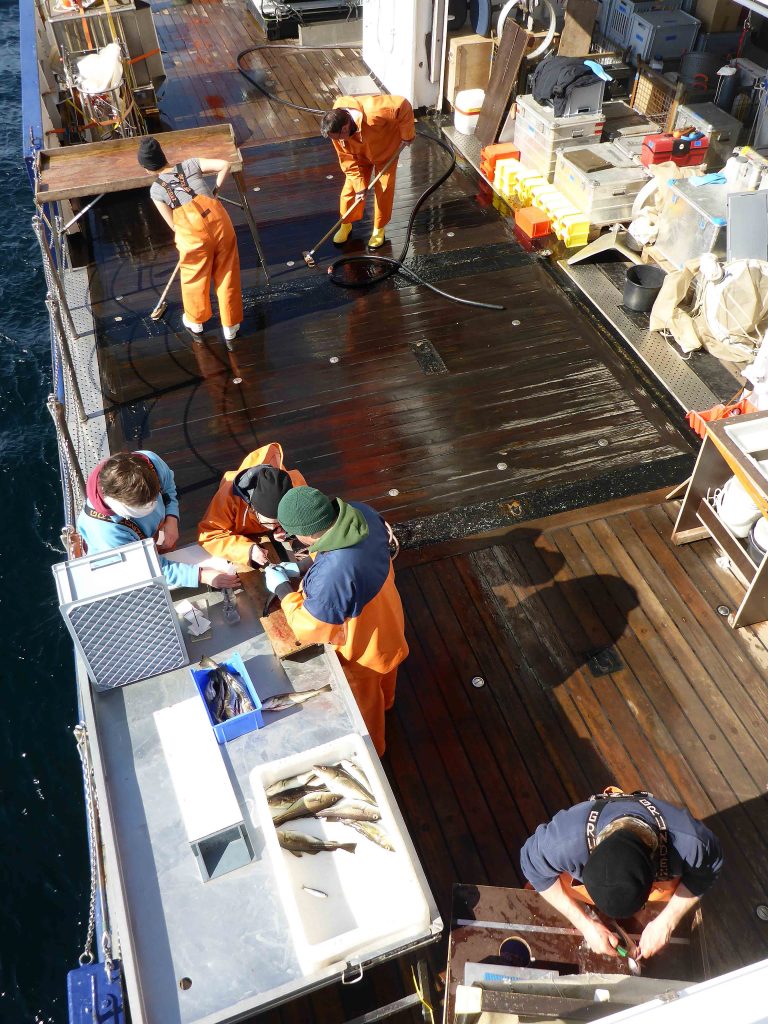
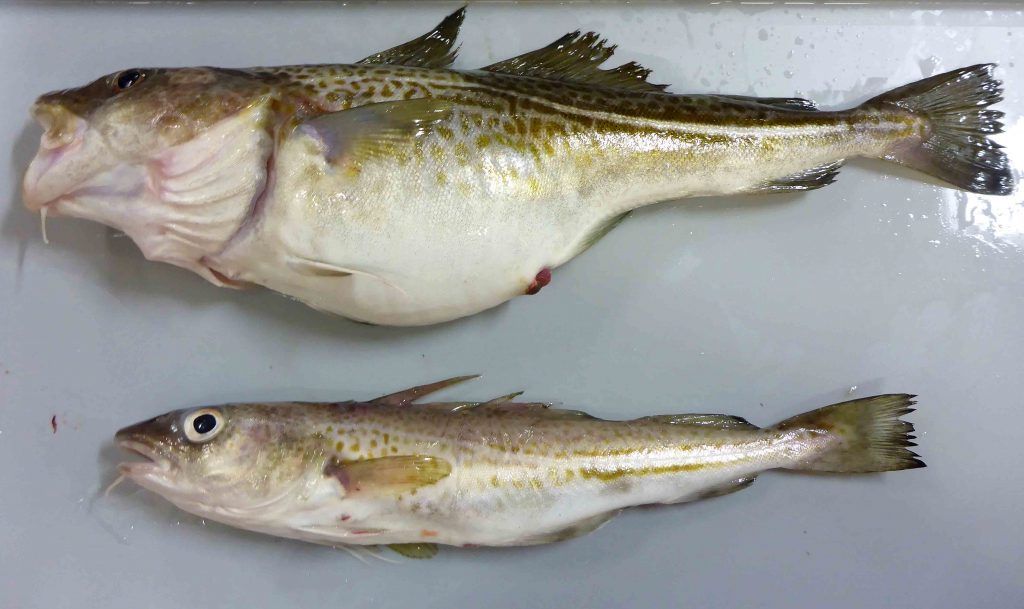
Sampling of fishes then includes taking fin clips for genetic studies, muscle samples for stable isotope analysis, otoliths (little bones in the head of fishes that accrue material over the life-time of a fish and allow the determination of the age of fishes by assessing the resulting tree-ring like structure), stomachs for the analysis of the feeding ecology, and gonads for the assessment of fecundity (i.e., how many eggs does a female spawn). Finally, samples are either conserved in ethanol, formalin or frozen for the later laboratory analyses on land.
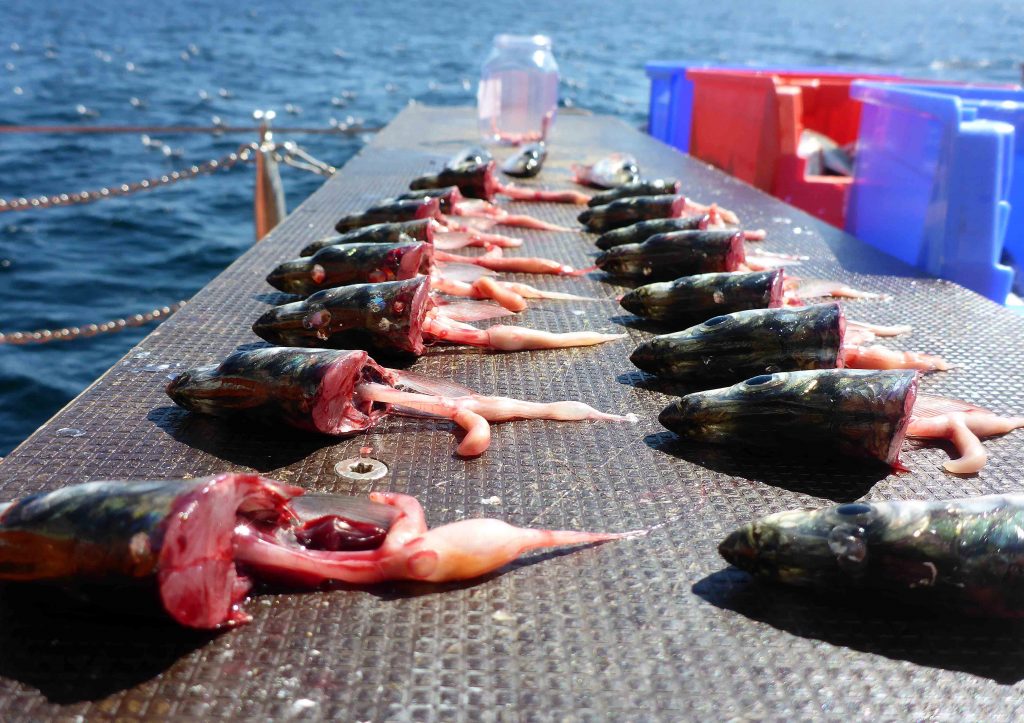
This was a glimpse into work on fishes that takes place on board. If you are interested to learn more about these topics, they have also been the subject of some of our past blog entries.
Greetings from on board ALKOR,
The crew of AL521
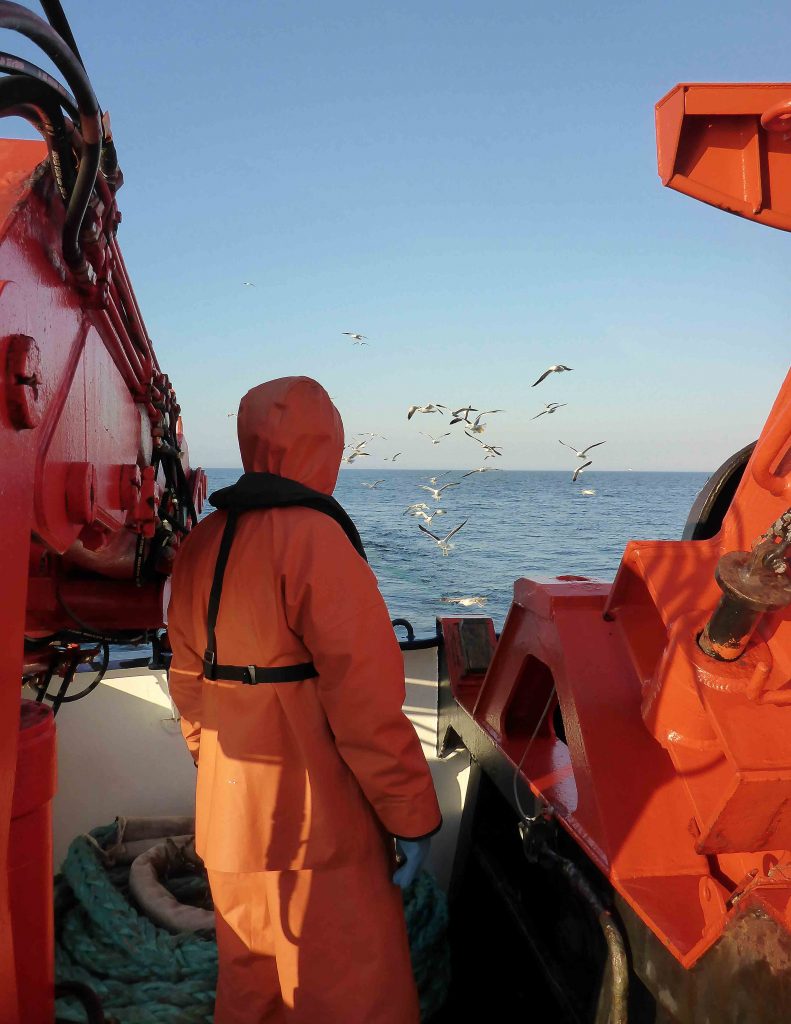
Puh, die Fischköppe hätte ich jetzt zum Frühstück nicht unbedingt sehen müssen… 😉 Aber ansonsten ein sehr interessanter Blog 🙂
Gutes Gelingen weiterhin und immer eine Handbreit Wasser unter dem Kiel!
Liebe Grüße und bis bald, die Nachbarn Lea, René und Sandra
Die gehören halt auch dazu 🙂 Danke, viele Grüsse und ein schönes Wochenende, Jan
Das sieht nach guter und erfolgreicher Arbeit aus. Auch das Wetter spielt mit. Weiterhin eine gute Fahrt und viel Erfolg.